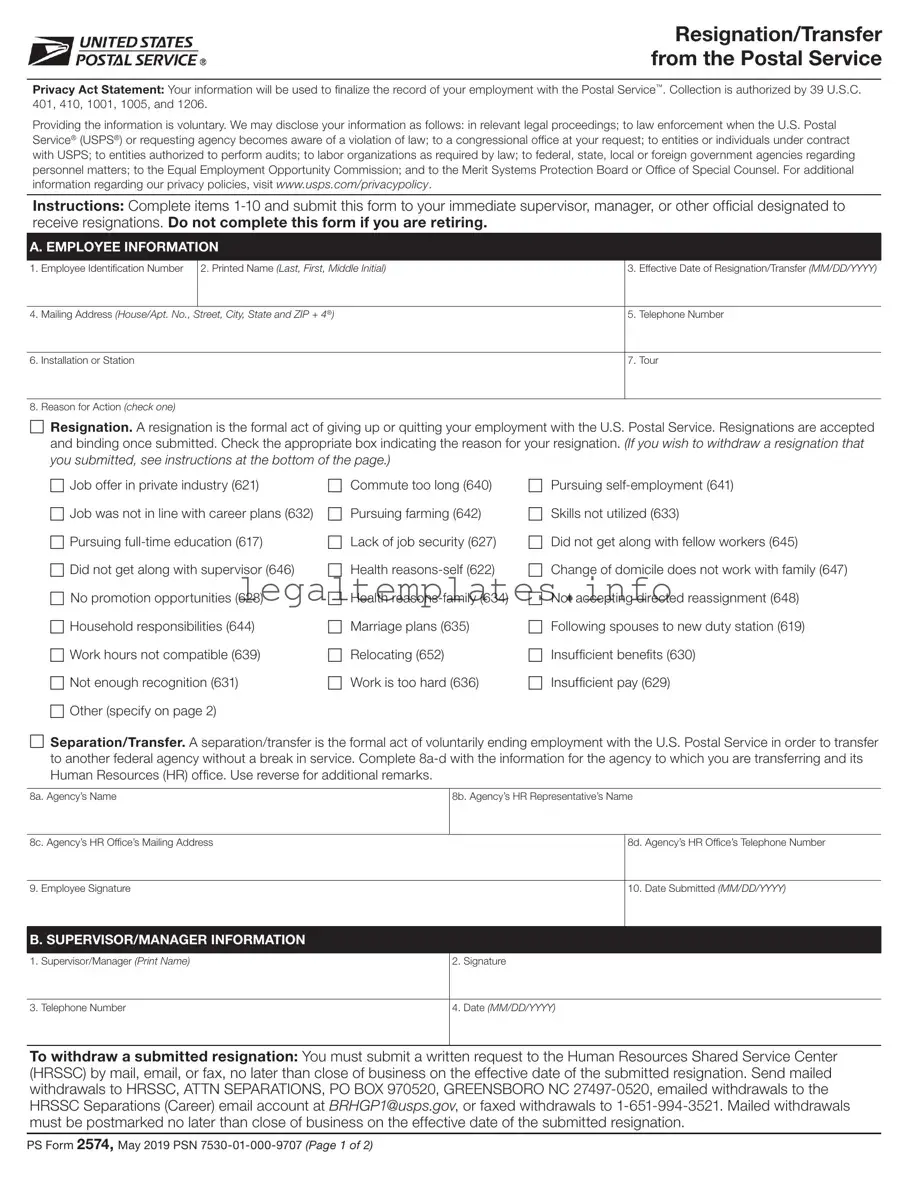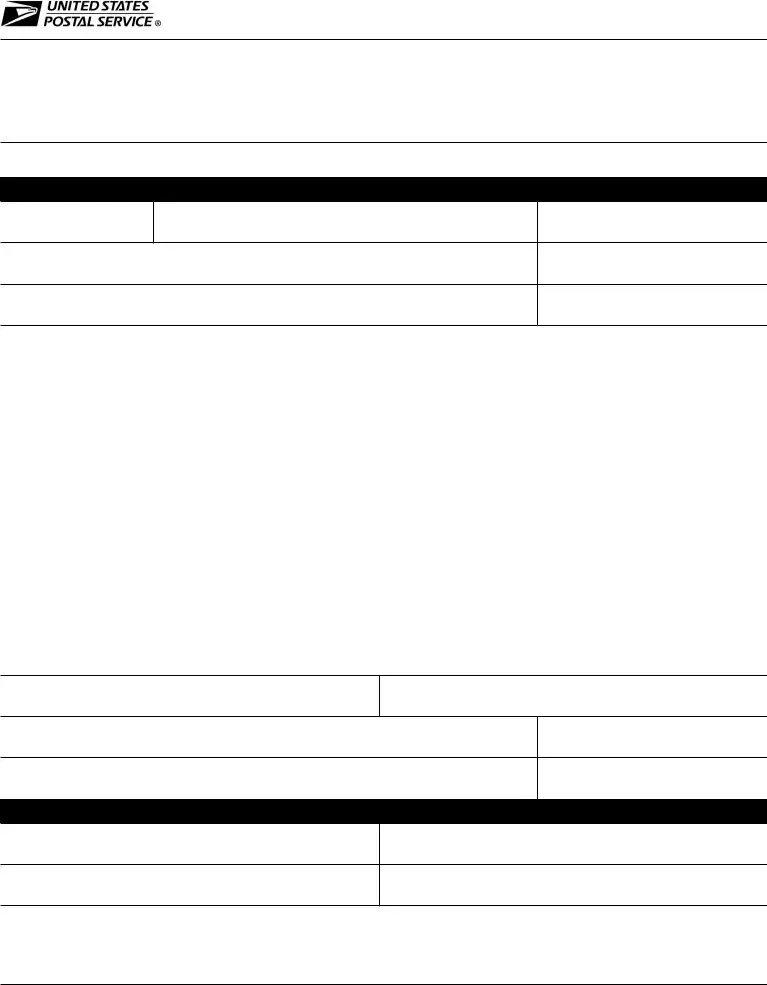The USPS Resignation Form closely resembles an Employee Exit Interview Form used by many organizations to gather feedback from departing employees. Both documents are pivotal at the end of an employment period, aiming to collect valuable information. While the resignation form formalizes the act of leaving and collects data for administrative closure, the exit interview form focuses on understanding the reasons behind the departure and improving organizational practices based on the feedback received. Nonetheless, both play a critical role in HR processes, providing crucial insights into the workplace environment and employee satisfaction.
Another document that shares similarities with the USPS Resignation Form is a Standard Resignation Letter. Both serve the primary function of notifying the respective administrative bodies about an employee's decision to resign. Whereas a resignation letter might be more personalized and detail the employee's reasons for leaving in a narrative format, the USPS form systematically collects specific reasons for resignation through checklists and structured fields. This structured collection of data aids in streamlining the separation process within the organization.
The Transfer Request Form used by many organizations to facilitate inter-departmental or intra-company moves bears resemblance to the transfer section of the USPS Resignation Form. Both documents are designed to capture the details necessary for processing an employee’s transfer, including destination location and role specifics. While the USPS document combines resignation and transfer into a single form, a standalone transfer request focuses solely on the logistics and approvals required for moving an employee within the framework of the same organization or to a different branch of a federal agency.
A Form for Changing Employee Personal Details is another document similar to the USPS Resignation Form, particularly regarding the section that collects personal and contact information. Both forms require current details about the employee for record-keeping and future communication. The primary difference lies in the purpose; the USPS document is for processing resignations or transfers, while the change details form is typically used for updating HR records due to changes in an employee’s personal circumstances.
The Non-Disclosure Agreement (NDA) Termination Form also shares commonalities with the USPS Resignation Form, as both signal an end to certain obligations between the employee and the organization. The USPS form marks the end of employment and possibly access to classified or sensitive mail-related information, while the NDA termination form officially ends the confidentiality requirements related to the employee's knowledge of proprietary information. These documents are critical for ensuring both parties are clear on the cessation of specific duties and privileges.
Performance Appraisal Forms are somewhat analogous to the USPS Resignation Form in that they are utilized to assess and document aspects of an employee’s tenure. Although one focuses on evaluating the performance and the other on resigning, they each play a part in the employee's lifecycle within an organization. Performance appraisals can sometimes precede a resignation, providing context for the departure, whereas the resignation form conclusively ends the employment relationship.
The Employee Onboarding Form shares a mirror-like relationship with the USPS Resignation Form as it initiates the administrative process of integrating a new employee into an organization, whereas the resignation form concludes it. Both are critical bookends in the employment lifecycle, capturing essential personal and professional information that facilitates either the beginning or the end of employment. These steps ensure smooth transitions and adherence to organizational policies during significant employment events.
Lastly, the Severance Agreement Form, much like the USPS Resignation Form, marks the termination of an employee's tenure, albeit under different circumstances. While the resignation form is used when an employee voluntarily leaves, a severance agreement is often employed when the departure is initiated by the employer under conditions that warrant compensation. Both documents signal an employment exit but differ in the nature and the specifics of the departure, underscoring the legal and financial protocols followed during the separation process.


